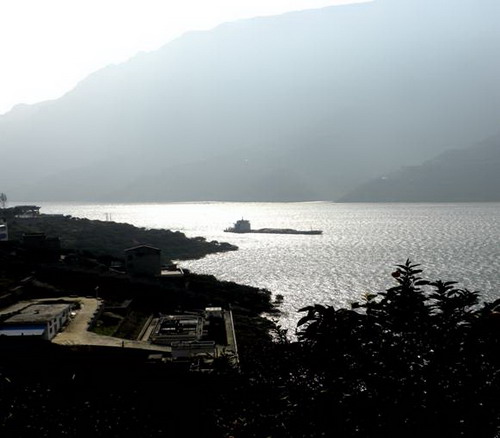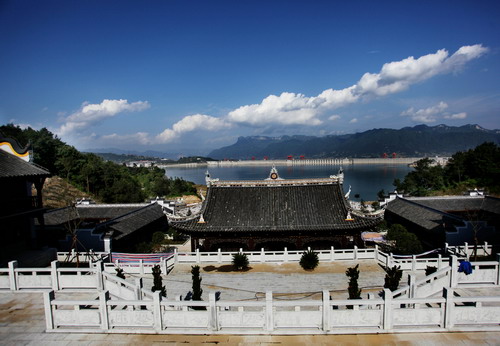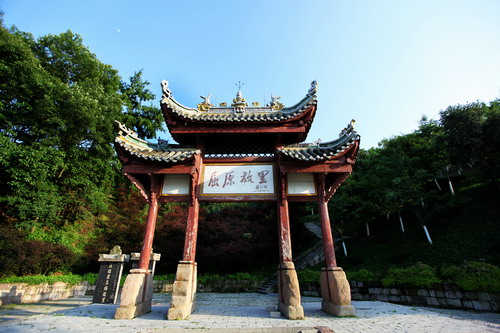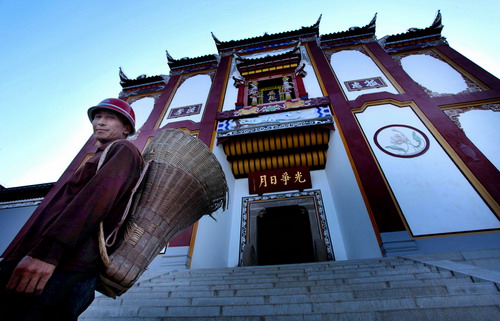| About Hubei | Culture & Arts | ||
| Attractions | Routes | ||
| Dining | Shopping | ||
| Hotels | Transportation | ||
| Entertainment | Travel agencies |
Jingshan to attract Wuhan tourists
Storytelling queen
For the love of Wuhan
Dangyang to promote tourism


Zigui, hometown of Qu Yuan
(chinatravel.com, chinaculture.org)
Updated: 2011-12-01
 |
| Zigui |
Zigui is located around one kilometer away from the Three Gorges Dam (The original town of Zigui located at the exit of the Xiling Gorge, but was then submerged under the water due to the water storage of the Three Gorges Dam project). What tourists see today is the newly-built town.
Zigui is the hometown of Qu Yuan, a great patriotic poet in the Warring States Period (476-221 BC), and Wang Zhaojun, a famous "political bride" in the Western Han Dynasty (206 BC- AD 8).
 |
| Qu Yuan Memorial in Zigui (photo from sxdaba.com) |
Zigui is rich in ancient culture and is the birthplace of the Dragon Boat Festival and dragon boat race. Zigui is the hometown of Qu Yuan, and for centuries, on the fifth day of the fifth lunar month each year, people in Zigui would hold a grand Dragon Boat Race to commemorate Qu Yuan.
Zigui provides access to some superlative local attractions: to the west is the Lesser Three Gorges- Lesser Three gorges, made of Longmen Gorge, Bawu Gorge and Dicui Gorge, is 50 kilometers long. The river is very shallow, and the water is lucid. It is full of steep peaks.
Its beauty is even superior to the Three gorges; to the east is the Three Gorges Dam and Gezhouba Dam; to the north is the Former Residence of Wang Zhaojun in Baoping town and the Shennongjia Nature Reserve, which keeps the wildest scenery in the province.
Qu Yuan Memorial in Zigui
 |
| Qu Yuan Memorial in Zigui (photo from sxdaba.com) |
Located in Zigui county in Hubei province, the Qu Yuan Memorial in Zigui is a memorial of Chinese historical figures. It was opened to the public in 1981.
There are two floors of exhibition halls -- the second floor displays more than 800 unearthed relics in the county, such as ancient daggers, spears and swords, the most precious of which is the sword of the King Goujian of Yue of the Warring States Period (475-221 BC); the first floor showcases cultural relics related to Qu Yuan, including the precious poetry Chu Ci (literally, poetry of the Kingdom of Chu), 500 sets of books collected by Qu Yuan, and over 300 calligraphic works and paintings of various dynasties collected by him.
The memorial also houses the stone sculpture and bronze sculpture of Qu Yuan, the Jusong Pavilion (the pavilion used to praise tangerines), and the stele corridor. The stone sculpture of 103 centimeters tall was made in the 16th year (1573) during the Jiajing reign of the Ming Dynasty (1644-1911) with the money donated by the common people in Guizhou, and is the earliest extant stone sculpture of Qu Yuan in China. The bronze sculpture stands in the center of the memorial, its pedestal made of granites is 2.5 meters high and the body is 3.92 meters tall. In the tangerine grove 50 meters away from the Qu Yuan Tomb, there are 60 steles carved with 25 pieces of Qu Yuan's poetry Li Sao (Sorrow after Departure).
 |
| Qu Yuan Temple (photo from sxdaba.com) |